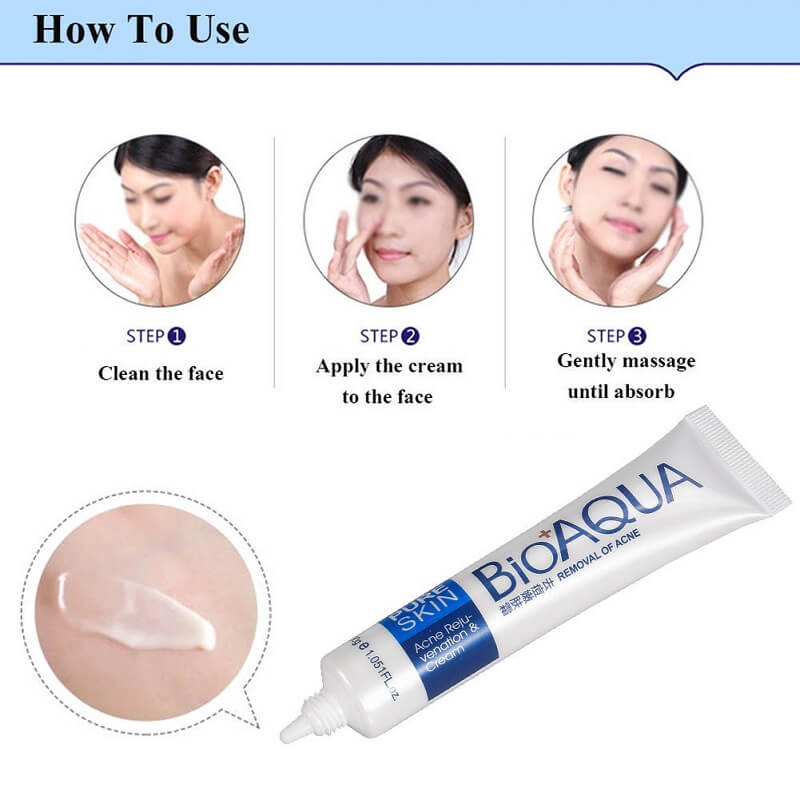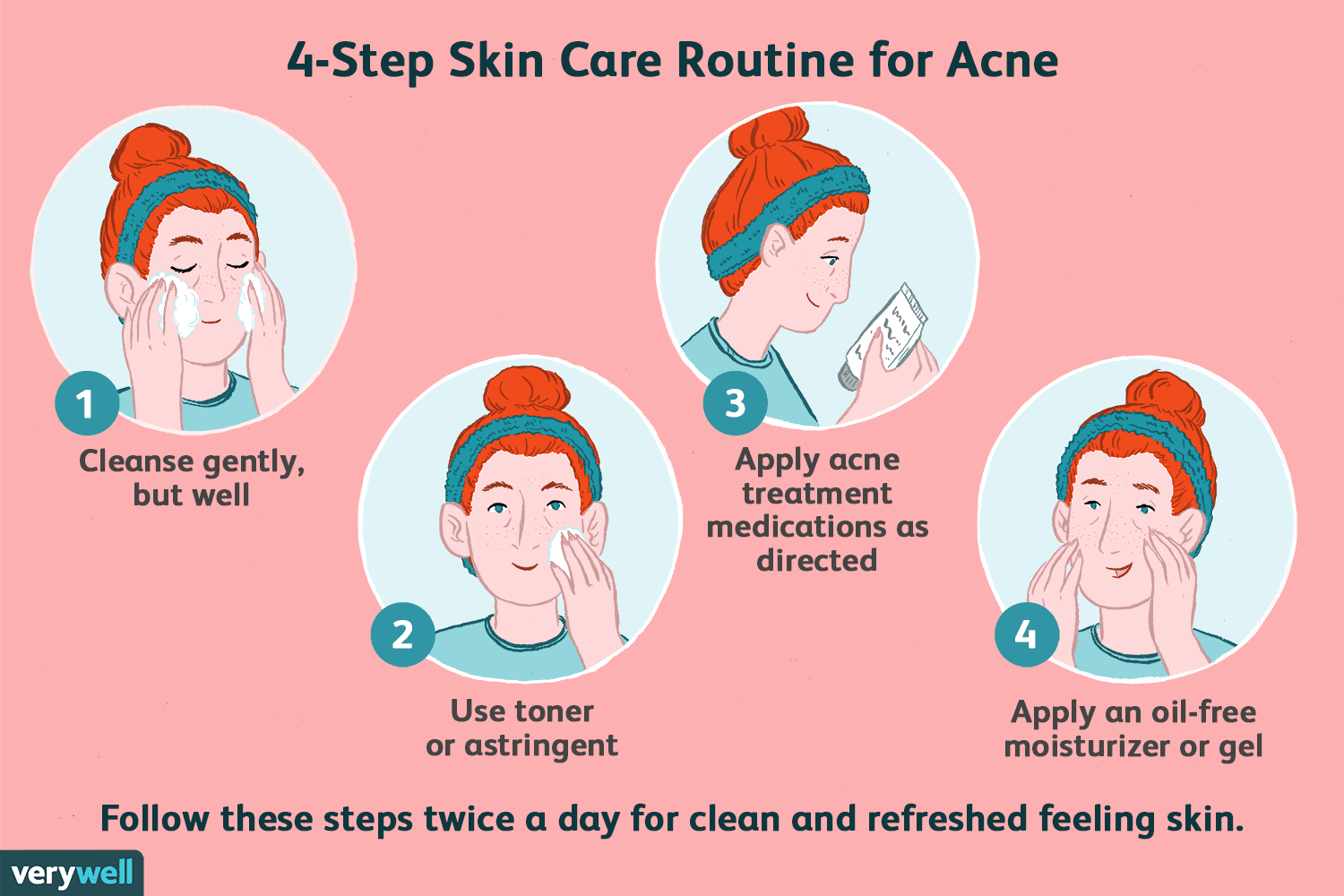To use acne cream, first cleanse your skin, then apply a thin layer to the affected area. Follow up with moisturizer if your skin tends to dry out.
Acne can be a frustrating condition, impacting both skin health and self-esteem. Finding the right acne cream and knowing how to apply it correctly is essential for effective treatment. With a myriad of products available, selecting one that suits your skin type and the severity of your acne is crucial.
A well-applied acne cream can target bacteria, reduce inflammation, and clear clogged pores, leading to clearer skin. The key is consistency and patience, as acne treatments often take time to show results. Remember to read the instructions on your acne cream carefully, as overuse can sometimes worsen skin issues.

Credit: www.youtube.com
The Acne Battle: Choosing The Right Cream
Struggling with acne can feel like an uphill battle. With countless creams on the market, picking the right one is crucial. This guide helps find the perfect acne cream for clear skin.
Factors In Selecting Acne Treatment
Identify your skin type and acne severity before choosing a cream. Not all treatments work for every skin. Consider your daily routine and how the cream fits into it. Look for non-comedogenic products to avoid clogging pores.
- Oily skin: Needs lightweight, gel-based creams.
- Dry skin: Benefits from hydrating, cream-based treatments.
- Combination skin: Requires a balance, often a lotion.
- Sensitive skin: Should opt for gentle, fragrance-free options.
Active Ingredients To Look For
Select a cream with proven ingredients to fight acne effectively. Here are some top choices:
| Ingredient | Benefits |
|---|---|
| Salicylic Acid | Unclogs pores and reduces redness. |
| Benzoyl Peroxide | Kills bacteria and removes dead skin cells. |
| Retinoids | Promotes cell turnover and prevents clogging. |
| Sulfur | Dries out blemishes and exfoliates skin. |
| Niacinamide | Improves skin tone and reduces inflammation. |
Remember to patch test new treatments to prevent allergic reactions. Start with lower concentrations to allow your skin to adjust. Consistency is key; give the product time to work.

Credit: www.rosemaryhealth.com.au
Before The Application: Preparing Your Skin
Starting acne treatment with the right skin prep can boost results. Clean and assess your skin type for the best cream application. This guide walks you through the initial steps for effective acne cream use.
Cleansing: The First Step
Clean skin is vital before applying any acne cream. Dirt, oil, and makeup can block the cream’s effectiveness. A gentle cleanser works best. Avoid scrubbing, as this can irritate the skin. Pat your skin dry with a soft towel.
- Use lukewarm water to wet your face.
- Apply a small amount of cleanser.
- Massage in a circular motion.
- Rinse thoroughly.
- Gently pat your face dry.
Understanding Your Skin Type
Knowing your skin type helps choose the right products. Acne creams vary for dry, oily, or sensitive skin. Use a non-comedogenic cream for oily skin to prevent clogged pores. Dry skin benefits from a hydrating formula. Sensitive skin needs a gentle, fragrance-free option.
| Skin Type | Characteristics | Recommended Acne Cream Type |
|---|---|---|
| Oily | Shiny, prone to breakouts | Non-comedogenic |
| Dry | Flaky, tight feeling | Hydrating |
| Sensitive | Easily irritated | Fragrance-free, gentle |
Perform a patch test before full application. Apply a small amount of cream to a discreet area. Wait 24 hours. Check for adverse reactions. No reaction means it’s safe to proceed with treatment.
Applying Acne Cream: Techniques For Best Results
Struggling with acne can be frustrating, but the right cream can work wonders. Knowing how to apply acne cream effectively is key to clear skin. Follow these steps for the best results.
Step-by-step Application Process
- Start with a clean face: Use a gentle cleanser to remove dirt and oil.
- Pat your skin dry: Use a soft towel and be gentle.
- Apply a small amount: Use a pea-sized drop of cream.
- Target problem areas: Dab the cream on pimples and affected zones.
- Spread evenly: Use your fingertips to apply in a thin layer.
- Let it absorb: Wait for the cream to sink in before applying other products.
Tips To Maximize Effectiveness
- Be consistent: Apply the cream daily as directed.
- Use sunscreen: Some acne treatments can make skin sensitive to the sun.
- Avoid touching your face: Keep your hands clean and away from your face.
- Stay hydrated: Drink plenty of water to help your skin.
- Eat healthily: A balanced diet supports skin health.
- Be patient: Results can take time, don’t give up.
Frequency Matters: How Often Should You Apply
Understanding the right frequency to apply acne cream is crucial. It ensures the effectiveness of the treatment while protecting your skin from irritation.
Daily Routines For Acne Control
Consistency is key in any skincare routine, especially when dealing with acne. Here’s a simple guide:
- Morning: Cleanse your face gently, then apply a thin layer of acne cream.
- Night: Repeat cleansing and apply the cream again before bed.
This twice-daily application helps combat acne effectively and keeps your skin clear.
When To Adjust Your Application Frequency
Sometimes, you might need to change how often you apply your acne cream:
| Situation | Action |
|---|---|
| Increased skin dryness | Reduce application to once daily. |
| Severe acne flare-ups | Consult a dermatologist for guidance. |
Listening to your skin is important. Adjustments can help maintain skin health.
Side Effects And How To Manage Them
Using acne cream can sometimes cause side effects. It’s important to know these effects and how to handle them. This knowledge can make your experience much better.
Common Reactions And Solutions
Many people experience some reactions after using acne creams. Here are the most common ones:
- Redness: This is often mild. Use the cream less often to help your skin adjust.
- Dryness: Applying a fragrance-free moisturizer can help. Look for ones labeled “non-comedogenic.”
- Peeling: This usually means your skin is adjusting. If peeling is severe, apply less cream and moisturize.
- Sensitivity to sunlight: Wear sunscreen and limit sun exposure. This protects your skin.
These reactions are generally temporary. They should improve as your skin gets used to the treatment.
When To See A Doctor
Sometimes, side effects can be more serious. Here’s when you should consult a healthcare professional:
- Severe itching, redness, or swelling: These could be signs of an allergic reaction.
- Blistering: This is uncommon and needs immediate attention.
- Worsening of acne: If acne does not improve after 8 weeks, seek advice.
Always follow the instructions on your acne cream. Talk to a doctor if you have concerns about side effects. They can help adjust your treatment plan.
Complementary Skin Care: Boosting Acne Cream Efficacy
Effective acne treatment requires more than just applying cream. To truly enhance the power of your acne cream, complementary skin care is essential. Think of it like a team effort where every product plays a crucial role. Let’s explore how to maximize your acne treatment with the right complementary skin care practices.
Moisturizers And Acne: Finding The Balance
You might think that moisturizer is a foe to acne-prone skin. But it’s actually a friend! The right moisturizer keeps your skin hydrated without causing breakouts. Here’s how to strike a perfect balance:
- Select non-comedogenic products that won’t clog pores.
- Look for oil-free and fragrance-free moisturizers.
- Apply moisturizer after your acne cream to lock in moisture.
Sunscreens: Protecting Skin While Treating Acne
Acne treatments can make your skin more sensitive to the sun. This is why sunscreen is a must. Ensure you’re shielded from harmful rays while healing your skin:
- Choose broad-spectrum sunscreens with SPF 30 or higher.
- Opt for mineral-based sunscreens with zinc oxide or titanium dioxide.
- Reapply every two hours, especially if you’re outdoors.
Diet And Lifestyle: Supporting Your Skin From Within
Acne can be a stubborn foe. While creams work on the surface, your diet and lifestyle play a huge role. This section digs into the ways you can nourish and care for your skin from the inside out. Healthy habits can make your skin glow and support the effectiveness of your acne cream.
Nutrition’s Role In Skin Health
Eating well is essential for clear skin. Certain foods help fight acne. Others can make it worse. Knowing which is which can transform your skin. Let’s look at some key nutrients and foods that support skin health:
- Vitamin A: Keeps skin cells healthy. Find it in sweet potatoes, carrots, and leafy greens.
- Omega-3 Fatty Acids: Reduce inflammation. Eat fish like salmon and nuts like walnuts.
- Zinc: Helps heal the skin. Good sources include beans, seeds, and meat.
- Water: Staying hydrated is critical. It helps flush out toxins.
On the other hand, some foods might trigger acne. Sugary snacks, dairy, and greasy foods can be culprits. Try to limit these in your diet.
Lifestyle Changes For Clearer Skin
Healthy living benefits your whole body, including your skin. Simple changes can have a big impact. Here are some lifestyle tweaks for better skin:
| Change | Benefit |
|---|---|
| Sleep | Boosts skin repair. Aim for 7-9 hours a night. |
| Exercise | Increases blood flow. This nourishes skin cells. |
| Stress Management | Less stress can mean fewer breakouts. Try meditation or yoga. |
| No Smoking | Smoke can clog pores. Quitting improves skin health. |
Remember, changes won’t happen overnight. Be patient and consistent. Your skin will thank you!
Beyond Cream: Advanced Acne Treatment Options
Acne can be stubborn, often requiring more than over-the-counter creams. For persistent or severe acne, exploring advanced treatments is key to clear skin. These options include prescription medications and professional procedures. They target acne at its source and provide long-lasting results. Let’s delve into the world of advanced acne solutions.
Exploring Prescription Medications
When over-the-counter creams fail, prescription medications offer a stronger approach. Dermatologists prescribe these based on your unique skin needs. Options include:
- Topical Retinoids: Increase cell turnover and reduce inflammation.
- Antibiotics: Kill bacteria and reduce redness.
- Oral Contraceptives: Regulate hormones in females.
- Isotretinoin: A powerful option for severe acne.
Always follow your dermatologist’s advice when using these medications. They will monitor your progress and adjust the treatment as needed.
Professional Treatments Worth Considering
Professional treatments can provide relief for tough acne. These are performed in a clinic or spa. Some effective treatments include:
| Treatment | Benefit |
|---|---|
| Chemical Peels | Remove dead skin and unclog pores. |
| Laser Therapy | Reduce oil production and kill bacteria. |
| Microdermabrasion | Exfoliate the skin for a smoother texture. |
| Light Therapy | Target bacteria and reduce inflammation. |
Consult with a skin care professional to find the best treatment for you. Remember, patience and consistency are vital. Results may take time, but they are worth the wait.
Success Stories: Real Results From Acne Cream Users
Discovering the power of acne cream can be life-changing. Countless individuals have seen incredible results, moving from frustration to clear skin. Here are their real success stories.
Testimonials And Transformations
Personal stories of triumph over acne light up the internet. These testimonials reveal the effectiveness of acne creams.
- Anna, 24: “After six weeks, my skin transformed. I feel confident!”
- Mike, 19: “My acne scars faded, and breakouts stopped. It’s a miracle!”
- Emma, 30: “Acne cream worked when nothing else did. I’m so grateful.”
What You Can Learn From Others’ Experiences
Learning from others can guide your acne cream journey. Here’s what to take away:
| Lesson | Explanation |
|---|---|
| Patience is Key | Results take time. Consistency leads to success. |
| Every Skin is Different | Some creams work better for certain skin types. |
| Follow Directions | Using the product correctly maximizes results. |
These insights come from real experiences. They highlight the importance of sticking to a routine and finding the right product.

Credit: thebioaqua.com
Maintaining Clear Skin: Long-term Strategies
Clear skin doesn’t just happen overnight. It requires smart strategies and daily efforts. With the right approach, you can maintain smooth, acne-free skin. Let’s explore some essential long-term strategies to keep breakouts at bay.
Preventing Future Breakouts
Consistency is key in preventing acne. Here’s how you can achieve it:
- Wash your face twice a day with a gentle cleanser.
- Avoid touching your face to keep bacteria away.
- Use non-comedogenic products to prevent pore blockage.
- Stay hydrated by drinking plenty of water each day.
- Eat a balanced diet rich in fruits, vegetables, and lean proteins.
By sticking to these habits, you create a solid foundation for clear skin.
Routine Adjustments For Sustained Results
Long-term clear skin requires some changes in your daily routine. Here are effective tips:
- Review your skincare products every few months. Ensure they still meet your needs.
- Change pillowcases and towels regularly to reduce oil buildup.
- Manage stress through activities like yoga or meditation. Stress can trigger acne.
- Get enough sleep—aim for at least 8 hours per night.
- Consider professional advice if over-the-counter creams aren’t working.
These adjustments can significantly contribute to maintaining your skin’s health.
| Tip | Action | Frequency |
|---|---|---|
| Face washing | Use lukewarm water and gentle cleanser. | Twice a day |
| Pillowcase change | Use clean pillowcases. | Every 2-3 days |
| Stress management | Practice relaxation techniques. | Daily |
This table outlines essential actions and their recommended frequency for maintaining clear skin.
Frequently Asked Questions
How Long Do You Leave Acne Cream On?
The duration to leave acne cream on varies by product. Typically, it’s between 15 minutes to overnight. Always check the label for specific instructions or consult a dermatologist. Adjust usage based on your skin’s reaction to ensure effectiveness and minimize irritation.
How To Use Acne Cream Correctly?
Start by cleansing your skin gently. Apply a thin layer of acne cream to the affected areas. Follow the product’s specific instructions for use. Avoid the area around your eyes, mouth, and nostrils. Use the cream consistently for the best results.
How Do You Use Acne Rid Cream?
Cleanse your skin gently before application. Apply a thin layer of acne rid cream to the affected area daily. Avoid contact with eyes and mouth. Use as directed by the packaging or your dermatologist. Consistent use typically yields the best results.
Should You Rub In Acne Cream?
Yes, you should gently rub in acne cream until it’s absorbed. Follow the product’s instructions for the best results. Avoid over-applying to prevent skin irritation.
Conclusion
Navigating the world of acne treatment can be overwhelming. Mastering the application of acne cream is crucial for clear skin. Remember to patch test, follow instructions, and be patient with results. Consistency is key. For more skin care tips, keep following our blog.
Clear, healthy skin awaits!

